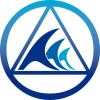Marine Geological Laboratory
At present days the Marine Geological Laboratory performs standard sedimentological analyses for characterization of seabed environment: grain size by sieve and hydrometer methods, carbonate and total organic matter contents.
Activities planned:
We plan to enhance the Marine Geological Laboratory capabilities by setting up:
1.) Optical based equipment for measuring particle size between 2 μm to 3 mm particle size by laser light scattering methods and particle shape analysis in soft sediments.
2.) X-Ray Fluorescence (XRF) core scanner. The XRF core scanner provides very high-resolution, non-destructive elemental (more than 18 elements) analysis of sediment cores, in a few hours. Applications of the XRF core scanner include: Fast element analyses of: Mg, Al, Si, P, S, Cl, K, Ca, Ti, Mn, Fe, Cu, Zn, Br, Rb, Sr, Ba, Pb; Rapid detection of volcanic tephra layers; Sub-mm scale analysis and counting of sediment laminae (varves); Detecting metal pollutants (Pb, Zn, Cu) in lake and fluvial sediments; Determining past erosion intensity from element ratios; Weathering and leaching indices; Sr/Ca and U/Ca ratios as paleoclimate indicators in carbonate sediments, density and color information and average sea water composition also are given.
This will be accompanied by introducing a strict methodology from taking the sample, sample preparation, analysis, quality control and reporting.

